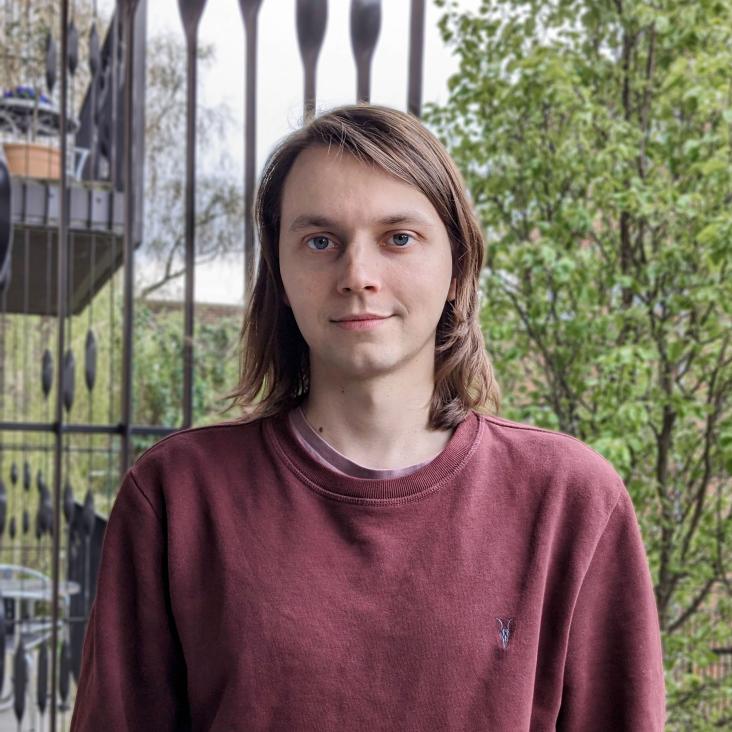Measurement of single- and double-differential cross sections for mesonless charged-current muon neutrino interactions on argon with final-state protons using the MicroBooNE detector
Physical Review D American Physical Society (APS) 112:11 (2025) 112004
Abstract:
Charged-current neutrino interactions with final states containing zero mesons and at least one proton are of high interest for current and future accelerator-based neutrino oscillation experiments. Using the Booster Neutrino Beam and the MicroBooNE detector at Fermi National Accelerator Laboratory, we have obtained the first double-differential cross-section measurements of this channel for muon neutrino scattering on an argon target with a leading proton momentum threshold of . We also report a flux-averaged total cross section of and several single-differential measurements which extend and improve upon previous results. Statistical and systematic uncertainties are quantified with a full treatment of correlations across 359 kinematic bins, including correlations between distributions describing different observables. The resulting dataset provides the most detailed information obtained to date for testing models of mesonless neutrino-argon scattering.Enhanced search for neutral current Δ radiative single-photon production in MicroBooNE
Physical Review D American Physical Society (APS) 112:9 (2025) l091101
Abstract:
We report results from an updated search for neutral current (NC) resonant baryon production and subsequent radiative decay (NC ). We consider events with and without final state protons; events with a proton can be compared with the kinematics of a baryon decay, while events without a visible proton represent a more generic phase space. In order to maximize sensitivity to each topology, we simultaneously make use of two different reconstruction paradigms, Pandora and Wire-Cell, which have complementary strengths, and select mostly orthogonal sets of events. Considering an overall scaling of the NC rate as an explanation of the MiniBooNE anomaly, our data exclude this hypothesis at 94.4% CL. When we decouple the expected correlations between NC events with and without final state protons, our data exclude an interpretation in which all excess events have associated protons at , and are consistent with an interpretation in which all excess events have no associated protons at .Measurement of three-dimensional inclusive muon-neutrino charged-current cross sections on argon with the MicroBooNE detector
Physics Letters B Elsevier 870 (2025) 139939
Abstract:
We report the measurement of the triple-differential cross section d 3 σ / d E vis d cos ( θ μ ) d P μ for inclusive muon-neutrino charged-current scattering on argon. This measurement utilizes data from 6.4 × 10 20 protons on target of exposure collected using the MicroBooNE liquid argon time projection chamber located along the Fermilab Booster Neutrino Beam with a mean neutrino energy of approximately 0.8 GeV. The mapping from reconstructed kinematics to truth quantities is validated within uncertainties by comparing the distribution of reconstructed hadronic energy in data to that of the model prediction in different muon scattering angle bins after applying a conditional constraint from the muon momentum distribution in data. The success of this validation provides confidence that the energy transfer in the MicroBooNE detector is well-modeled within simulation uncertainties, enabling a reliable unfolding to a triple-differential cross section defined at the nominal neutrino flux over muon momentum, muon scattering angle, and visible neutrino energy. This validation not only supports accurate cross-section extraction, but also establishes a critical foundation for tuning interaction models used in future neutrino oscillation measurements. The unfolded measurement covers an extensive phase space, providing a wealth of information useful for future liquid argon time projection chamber experiments measuring neutrino oscillations. Comparisons against a number of commonly used model predictions are included and their performance in different parts of the available phase-space is discussed.Measurement of charged-current muon neutrino-argon interactions without pions in the final state using the MicroBooNE detector
Physical Review D American Physical Society (APS) 112:7 (2025) 072007
Abstract:
We report a new measurement of flux-integrated differential cross sections for charged-current (CC) muon neutrino interactions with argon nuclei that produce no final-state pions ( ). These interactions are of particular importance as a topologically defined signal dominated by quasielasticlike interactions. This measurement was performed with the MicroBooNE liquid argon time projection chamber detector located at the Fermilab Booster Neutrino Beam and uses an exposure of protons on target collected between 2015 and 2020. The results are presented in terms of single- and double-differential cross sections as a function of the final-state muon momentum and angle. The data are compared with widely used neutrino event generators. We find good agreement with the single-differential measurements, while only a subset of generators are also able to adequately describe the data in double-differential distributions. This work facilitates comparison with Cherenkov detector measurements, including those located at the Booster Neutrino Beam.Spatial and temporal evaluations of the liquid argon purity in ProtoDUNE-SP
Journal of Instrumentation IOP Publishing 20:09 (2025) P09008


